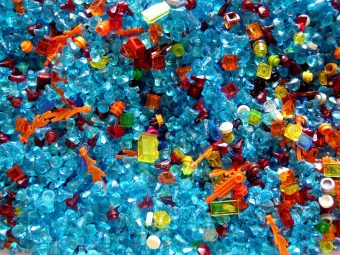The global effort to reduce plastic production and waste often focuses on the use of specific items – straws, single-use grocery bags – or on the challenge of recycling or how to clean up the mess. It’s rare to see researchers offer a holistic view of how plastic is directly harming human health, as opposed to oceans or marine life, and rarer still for a report to cover the entire life cycle of plastic.

Yet that’s exactly what a 74-page assessment from the Center for International Environmental Law (CIEL) and its partners does. The authors of “The Hidden Costs of a Plastic Planet” don’t stop with the all-too-familiar plastic water bottles on the beach or microplastics in the food chain: They’ve traced plastic’s entire journey from the environmental costs of fossil fuel extraction, to the public health hazards associated with the production process, to the toxic effects of waste incineration.
“Plastic is a global health crisis hiding in plain sight,” warn the experts, who come from eight different organizations including Global Alliance for Incinerator Alternatives (GAIA) and University of Exeter. More than half of all plastics ever made have been produced in the last 15 years, and nearly two-thirds of all plastics ever made have been scattered in some way in our water, soils and bodies. We’re breathing tiny particles in the air, eating tiny particles in our food, and we’re on a pathway to produce ever more.
To begin with, about 99 percent of all plastic components come from fossil fuels. Ethylene and propylene come from natural gas liquids, naphta is a byproduct of crude oil refining, and propylene is now derived from coal. The impacts of coal mines and refineries may be less visible when campaigns are focused on wildlife or the worthy goal of ocean cleanup, but that’s exactly why they’re “hidden.”
“The extraction of oil and gas, particularly hydraulic fracturing for natural gas, releases an array of toxic substances into the air and water, often in significant volumes,” the authors note. “Over 170 fracking chemicals that are used to produce the main feedstocks for plastic have known human health impacts.”
Consumers add to the invisible pile of plastic when they wash their clothes, releasing tiny microfibers into the water system, or use a lengthy list of personal care products. The shampoo bottle can always be tossed into the recycling bin, but the microbeads are a genie that can never be put back in.
The PFAS coatings are already in a third of all fast food wrap; the phthalates are leaching into the food. One 2018 study of 22 drinking water containers in German grocery stores found small (-50–500 μm) and very small (1-50 μm) microplastics in every type of water, whether sold in cartons, glass or more plastic.
Then there’s the recycling itself. Plastics are low-value, and now there’s even less of a market when there was already a low recycling rate in the first place, so they’re treated as waste. “All plastic waste management technologies (including incineration, co-incineration, gasification, and pyrolysis) result in the release of toxic metals, such as lead and mercury,” the authors note. Dioxins and acid gases enter the air, water and soils of neighboring communities, while fly ash and emissions travel much farther.
So it’s easy to see why the call to action includes “making the invisible visible.” We can’t just pick up every food wrapper or cigarette butt we see, and also must act on all the plastic health harms to which we have been blind.
Source: Sustainability Times



